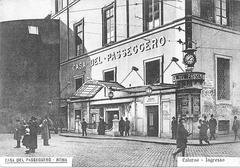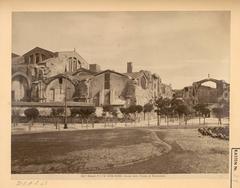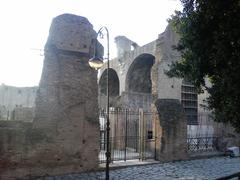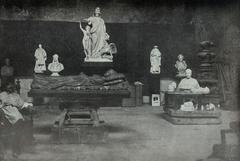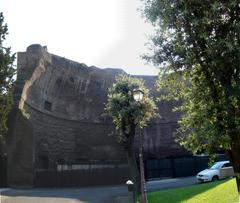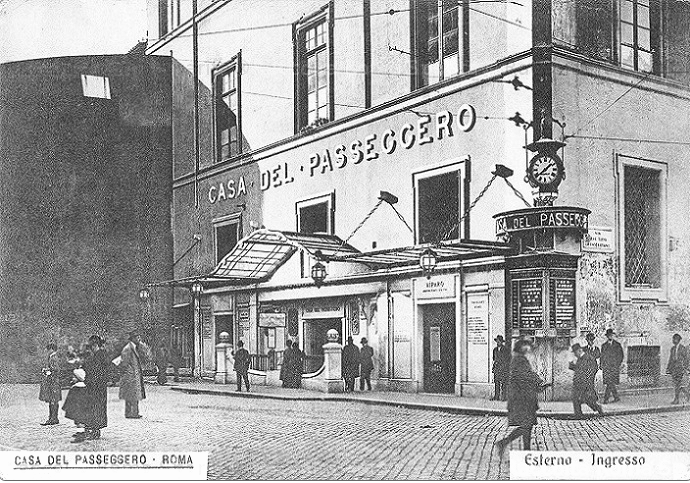
Baths of Diocletian: Visiting Hours, Tickets, and Rome Historical Sites Guide
Date: 14/06/2025
Introduction
The Baths of Diocletian, in the heart of Rome, stand as a monumental testament to Roman engineering, architecture, and social culture. Built between 298 and 306 AD under Emperor Diocletian and his co-ruler Maximian, these were the largest of Rome’s imperial bath complexes, accommodating up to 3,000 visitors at once. Spanning almost 13 hectares, the baths were more than a place for washing—they were a social and cultural hub, with gymnasiums, libraries, gardens, and lecture halls that fostered interaction across all social classes. Today, the baths are an integral part of the National Roman Museum, inviting visitors to explore their grandeur, history, and museum collections (Museo Nazionale Romano; History Cooperative; Rome.net).
Table of Contents
- Historical Background
- Architectural Significance
- Visiting the Baths of Diocletian
- Preservation and Restoration
- Frequently Asked Questions (FAQ)
- Summary and Final Tips
- References and Further Reading
Historical Background
Origins and Construction
Commissioned in 298 AD by Maximian and completed in 306 AD, the Baths of Diocletian reflected the ambition of the Roman Tetrarchy. Intended to surpass previous complexes like the Baths of Caracalla, they symbolized imperial power and generosity (Museo Nazionale Romano; Romeing). Using the Acqua Marcia aqueduct, the baths were constructed in a densely populated area between the Viminal and Quirinal hills (Mamalovesrome; The Geographical Cure).
Social and Cultural Role
The Baths of Diocletian were more than a bathing facility—they were a multifunctional public space accessible to all social classes, accommodating up to 3,000 visitors (Rome.info). The complex included amenities such as gymnasiums, libraries, lecture halls, and gardens, encouraging both physical activity and intellectual pursuits (Ancient Engineering Marvels). The baths played a significant role in Roman social and political life, serving as venues for business, networking, and cultural events (History Tools).
Women were admitted, often at separate times or in designated areas, reflecting both inclusivity and Roman social norms (History Skills). The affordable entry fee encouraged wide participation, making the baths a rare place of social equality (History Cooperative).
Decline and Transformation
The baths fell into decline in the 6th century during the Gothic War, when the aqueducts were cut and the complex was abandoned (Museo Nazionale Romano). In 1561, Michelangelo was commissioned to convert part of the ruins into the Church of Santa Maria degli Angeli e dei Martiri, preserving significant architectural elements (Mamalovesrome). In the 19th century, the site became part of the National Roman Museum, ensuring ongoing conservation.
Architectural Significance
Layout and Design
The complex was organized along a central axis, featuring the caldarium (hot room), tepidarium (warm room), frigidarium (cold room), and the open-air natatio (swimming pool). The frigidarium, now the nave of Santa Maria degli Angeli, boasts soaring vaulted ceilings, exemplifying Roman mastery in concrete construction (Romeing). The caldarium and tepidarium featured innovative hypocaust heating systems (Rome.info).
Engineering Innovations
The baths were supplied by the Acqua Marcia aqueduct, with advanced plumbing, lead piping, and a sophisticated sewage system (Ancient Engineering Marvels). Decorative elements such as marble, mosaics, and statuary added to the imperial grandeur (Visit Colosseum Rome).
Notable Spaces
- Frigidarium: Now the church nave, with original cross-vaults.
- Tepidarium: Warm room with preserved hypocaust remains.
- Caldarium: Partially intact hot room with large windows.
- Natatio: Massive open-air pool.
- Aula Ottagona: Octagonal hall, later a planetarium, showcasing geometric innovation.
Later Adaptations and Preservation
Michelangelo’s 16th-century intervention preserved the baths’ spatial volumes. Further modifications in the 18th century by Luigi Vanvitelli included the addition of a high altar and transformation of the nave (The Geographical Cure). Today, the baths are a museum, with restoration efforts allowing visitors to explore its architectural and artistic heritage (Visit Colosseum Rome).
Visiting the Baths of Diocletian
Visiting Hours and Tickets
- Opening Hours: Tuesday to Sunday, 9:00 AM – 7:00 PM (last entry 6:00 PM). Closed Mondays and major holidays.
- Tickets: General admission is €12 (as of 2025), €2 for EU citizens aged 18–25, free for children under 18 and EU teachers. Tickets include entry to other National Roman Museum branches and are valid for 7 days (CoopCulture).
Tickets can be purchased online or at the entrance. Booking in advance is recommended.
How to Get There
Located at Viale Enrico de Nicola, 78, the baths are a five-minute walk from Rome’s Termini Station, accessible via Metro Lines A and B, and numerous bus lines.
Accessibility
The site is wheelchair accessible through ramps and elevators in main areas. Accessible restrooms and assistance are available (Rome Accessible).
Guided Tours and Audio Guides
Guided tours are available in multiple languages and can be booked in advance or on-site. Audio guides provide historical context and are available for rent.
Visitor Tips
- Allow at least 1.5–2 hours for your visit.
- Wear comfortable shoes due to extensive walking.
- Visit early or late to avoid crowds.
- Photography (non-flash) is permitted in most areas.
- Check the official website for temporary exhibitions and special events.
Facilities
- Restrooms and cloakroom available on-site.
- Bookshop with publications and souvenirs.
- Cafés and restaurants nearby.
Preservation and Restoration
Conservation Efforts
The baths have undergone extensive conservation, including structural stabilization, restoration of mosaics and marble, and protection of hypocaust heating systems. Environmental sensors monitor humidity and temperature to safeguard delicate materials.
Modern Use and Cultural Events
As a museum branch, the baths house exhibitions of ancient sculpture and inscriptions, and regularly host contemporary art events and cultural programs, bringing ancient and modern creativity together.
Frequently Asked Questions (FAQ)
What are the opening hours?
Tuesday to Sunday, 9:00 AM to 7:00 PM (last entry 6:00 PM). Closed on Mondays and certain holidays.
How much are tickets?
€12 full price, €2 for EU citizens 18–25, free for children under 18 and eligible categories. Tickets include access to other National Roman Museum sites.
Are guided tours available?
Yes, in multiple languages, bookable online or on-site.
Is the site accessible?
Yes, with ramps, elevators, and accessible restrooms.
Can I take photos?
Non-flash photography allowed; check for restrictions during exhibitions.
How do I get there?
Near Termini Station, accessible by Metro (Lines A and B), bus, or taxi.
Summary and Final Tips
The Baths of Diocletian offer a unique journey into ancient Roman society, engineering, and artistry. Their vast scale, architectural innovation, and social role make them a must-see for anyone interested in Rome’s heritage. Combined tickets, accessible facilities, and proximity to other central sites make visiting convenient and enriching. For an optimal experience, book tickets online, consider a guided tour, and check for current exhibitions and events. Stay updated by visiting the official museum website and consider combining your visit with nearby attractions like the Basilica of Santa Maria degli Angeli e dei Martiri and Piazza della Repubblica.
References and Further Reading
- Museo Nazionale Romano - Baths of Diocletian
- Romeing - Baths of Diocletian
- Mamalovesrome - The Baths of Diocletian
- The Geographical Cure - Guide to Diocletian’s Baths
- Rome.info - Attractions: Baths of Diocletian
- Ancient Engineering Marvels - The Baths of Diocletian
- History Skills - Roman Baths
- History Cooperative - Roman Baths
- Rome.net - Baths of Diocletian
- Crystalinks - Roman Baths
- History Tools - Bathing in Luxury: Exploring the Magnificent Baths of Diocletian
- CoopCulture - Museo Nazionale Romano - Baths of Diocletian
- Rome Accessible - Accessibility in Rome
- Palazzo Massimo
- Santa Maria degli Angeli
- Rome Museum
- Visit Colosseum Rome
